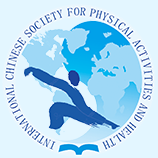Document Type
Abstract
Keywords
body mass index, peer support, waist circumference
Publication Date
2-2023
Abstract
This study aimed to understand the effects of adopting peer support in physical education (PE) class on university students’ body composition and circumference. Two university PE classes were recruited and assigned randomly to class with peer support (CWP; n=41; 8 underweight, 23 normal weight, 5 overweight, and 5 obesity; mean age=19.6±1.3yrs; height=169.5±8.0 cm) or class without peer support (CWOP; n=41; 9 underweight, 23 normal weight, 4 overweight, 5 obesity; mean age=19.3±1.1yrs; height=169.1±6.7 cm). Both classes adopted 16 weeks the same bodyweight management program for fitness promotion for 90 min/session/week (15 min warm-up, 60 min main training, 15 min cool-down). Students in CWP were asked to group with 2-3 students and required to train in the same group throughout the program, while students in CWOP were asked to train individually. The two classes were coached by the same teacher and held in the same semester. Body composition (InBody320, South Korea) and circumference metrics (waist and hip circumferences, waist-to-hip ratio [WHR], body adiposity index [BAI]) were obtained before and after the program and statistically analyzed using repeated measures ANOVA. Weekly training frequency and duration after class were obtained using questionnaire and compared using t-tests. Results showed that the proportion of students in abnormal weight is significantly reduced only in CWP (χ2=10.7, P=0.013). Body mass (F=5.96, P=0.017) and body mass index (F=4.40, P=0.039) significantly reduced in both classes, and changes in muscle mass and body fat percentage were greater in CWP (45.1±8.9kg vs. 46.0±9.1kg, P < 0.001, Cohen’s d=0.10; 19.8%±8.0% vs. 18.4%±8.3%, P=0.002, Cohen’s d=0.18) than CWOP (45.8±7.8kg vs. 45.6±8.0kg, P=0.42; 19.9%±7.3% vs. 19.6%±7.3%, P=0.23). Further, waist circumference, WHR, and BAI were significantly reduced in both groups, and BAI changes were greater in CWP (25.01±3.44 vs. 24.06±3.08, P < 0.001, Cohen’s d=0.29) than CWOP (24.29±3.53 vs. 24.08±3.34, P=0.42). Finally, CWP group trained longer (3.2±0.9hrs vs. 1.6±0.8hrs, P=0.003, Cohen’s d=1.88) and more frequently (2.6±1.3 vs. 1.3±2.1, P < 0.001, Cohen’s d=0.74) than their counterparts. University students benefited from the 16-week PE class with reduced body composition and circumference. However, CWP group showed greater changes. Accordingly, social support from a peer can enhance motivation, such as elders with a partner would more likely be active. Meanwhile, students with a peer would have longer training duration and higher training frequency. Thus, peer support affects training habits and benefits students in body composition and circumference. PE teachers are encouraged to adopt peer support in their classes for fitness promotion.
DOI
https://doi.org/10.18122/ijpah.020135.boisestate
Recommended Citation
Li, Chuhao; Chen, Lin; Xiang, Yi; Lu, Yongshen; and Mo, Shiwei
(2023)
"Effects of Peer Support on Body Composition and Circumference in Chinese University Students,"
International Journal of Physical Activity and Health: Vol. 2:
Iss.
1, Article 35.
DOI: https://doi.org/10.18122/ijpah.020135.boisestate
Available at:
https://scholarworks.boisestate.edu/ijpah/vol2/iss1/35
Included in
Exercise Science Commons, Health and Physical Education Commons, Public Health Commons, Sports Studies Commons


